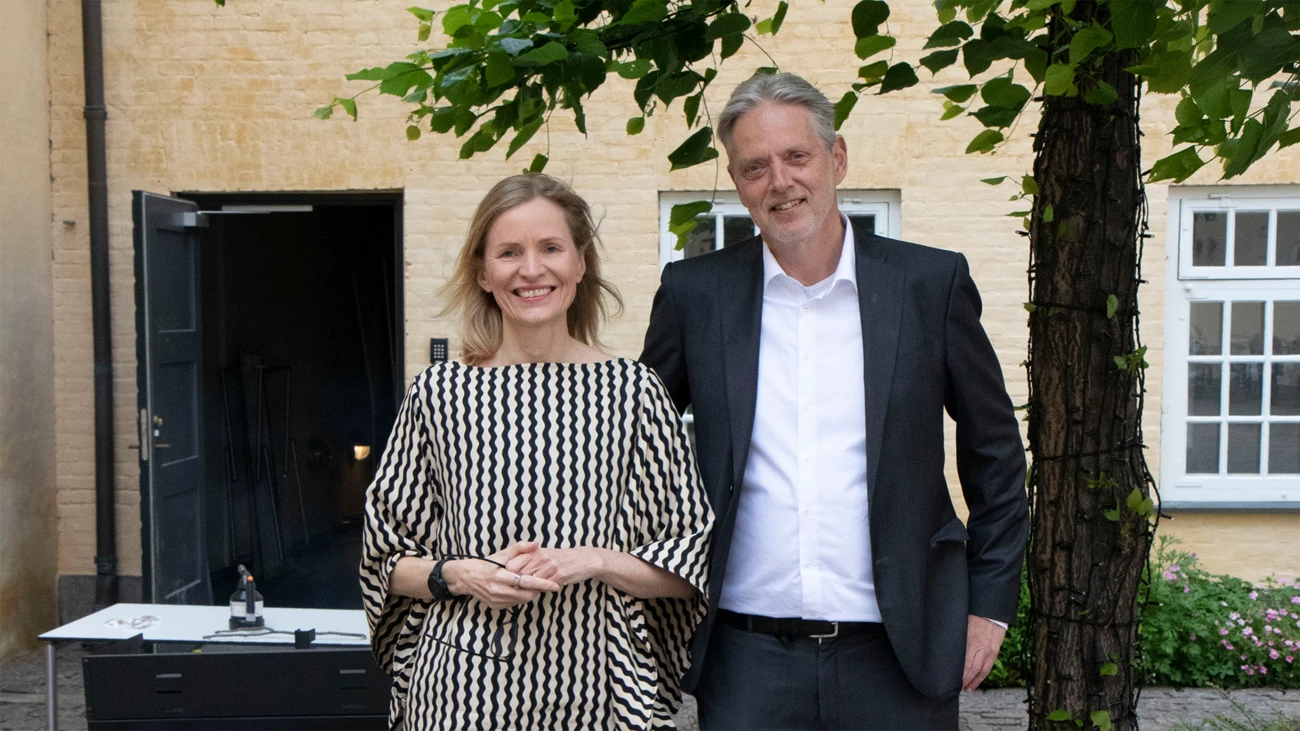Get the Nordea Economic Outlook
See Nordea's latest projections and analysis for the Nordic and global economies and markets.
Learn moreSiden findes desværre ikke på dansk
Bliv på siden | Fortsæt til en relateret side på danskSigne Krogstrup, Governor of the Danish National Bank, discussed monetary policy in turbulent times with Nordea's institutional clients.

The Danish economic outlook, monetary policy, the green transition and central bank digital currencies topped the agenda at a recent event with Danish National Bank governor Signe Krogstrup for Nordea’s institutional clients.
Krogstrup became governor of Denmark’s central bank in 2020, the second woman ever to hold the post. At the event, “Danish monetary policy in challenging times,” Krogstrup presented a picture of a strong Danish economy that has managed to weather the Covid-19 pandemic relatively well.
Economic activity took a sharp fall when the pandemic hit, but Denmark’s recovery has been faster and stronger than in most other countries. While pandemic responses around the world, including China’s Covid lockdowns, continue to have repercussions, the Danish economy has also been hit by new challenges – war in Ukraine, high inflation and a tight labour market.
“We haven’t seen normal yet,” Krogstrup said. However, she added that the Danish economy stands well-equipped thanks to a large savings buffer in the private sector, healthy public finances and strong competitiveness. She did note that Denmark’s labour constraints and high inflation prints have triggered worries about the prospect of a wage-price spiral where wage increases enter a feedback loop with rising prices.
“We need to avoid it before it starts,” she said.

We need to avoid (a wage-price spiral) before it starts.
Yet Krogstrup noted that markets expect central banks in the US and Euro area to tighten monetary policy relatively quickly. The Fed has already entered an aggressive tightening cycle. The ECB has also already effectively started tightening through its communication about ending its bond buying programme, she said, and has announced that it will soon begin to hike rates as well.
That’s one key difference from the 1970s when inflation took hold, Krogstrup stressed: “Central banks didn’t react then like they do today. We’ve learned a lot from the 70s episode. Central banks are reacting at the moment.”
She also emphasised that inflation expectations play a key role, and financial markets expect inflation to fall again longer out.
Unlike the Federal Reserve and the ECB, the Danish central bank does not use monetary policy to respond to inflation concerns. Rather, it conducts a fixed exchange-rate monetary policy to keep the Danish krone pegged to the euro.
Going forward, the Danish central bank forecasts more subdued economic growth and higher price increases than before the pandemic. While inflation is expected to be high this year, it should fall in the long run.
Krogstrup also put the spotlight on the financial sector’s role in the green transition. She noted that the central bank invests its foreign exchange reserve as responsibly as possible, taking into account its purpose as well as commitments under the Paris Agreement.
In addition, Denmark issued its first sovereign green bond in January (with Nordea serving as structuring advisor). The motivation was to support the continued development of green financial markets and to attract a broad and diverse investor base to Danish government bonds, according to Krogstrup.
The green bond entered the market with a “surprisingly high greenium” of almost 6 basis points, which has since fallen to around 2-3 basis points, following a similar pattern for sovereign green bonds in Sweden, Holland and Germany, she said.
Krogstrup also delved into the hot topic of central bank digital currencies. As payments have shifted online, central banks around the world have been exploring whether to launch their own digital currencies.
“Many have looked at it because they don’t have a well-developed market in the first place. We have a well-developed payment system in Denmark,” said Krogstrup, adding that payments innovation was best secured by keeping a role for private players in this market.
“We don’t currently see the use case for offering a central bank retail digital currency in the Danish context, but it’s something we’re following closely,” she said.
She also emphasised the need for more regulation around digital assets such as stablecoins, highlighting the sudden collapse of TerraUSD in May.
Nordea’s Group Chief Economist Helge Pedersen thanked Krogstrup for sharing her insights. He also reiterated the uncertainty and volatility of the current times:
“It’s a new era we find ourselves in, with a new paradigm. Negative rates soon are a thing of the past.”
Get Nordea's outlook on the Danish economy, and find our macroeconomic research here.
See Nordea's latest projections and analysis for the Nordic and global economies and markets.
Learn more
Sustainability
Amid geopolitical tensions and fractured global cooperation, Nordic companies are not retreating from their climate ambitions. Our Equities ESG Research team’s annual review shows stronger commitments and measurable progress on emissions reductions.
Read more
Sector insights
As Europe shifts towards strategic autonomy in critical resources, Nordic companies are uniquely positioned to lead. Learn how Nordic companies stand to gain in this new era of managed openness and resource security.
Read more
Open banking
The financial industry is right now in the middle of a paradigm shift as real-time payments become the norm rather than the exception. At the heart of this transformation are banking APIs (application programming interfaces) that enable instant, secure and programmable money movement.
Read more